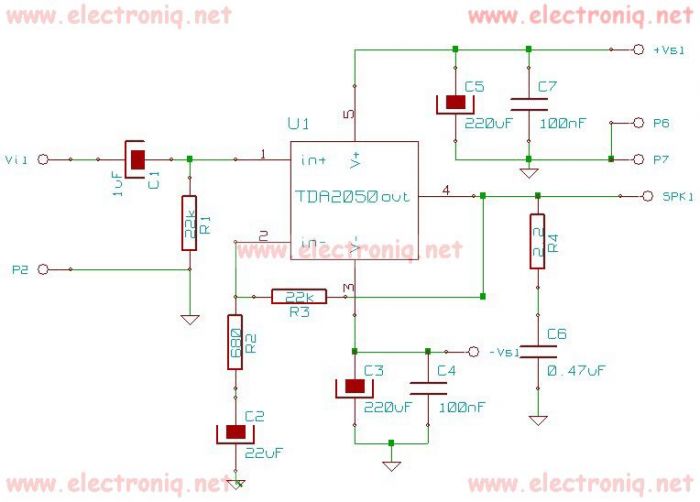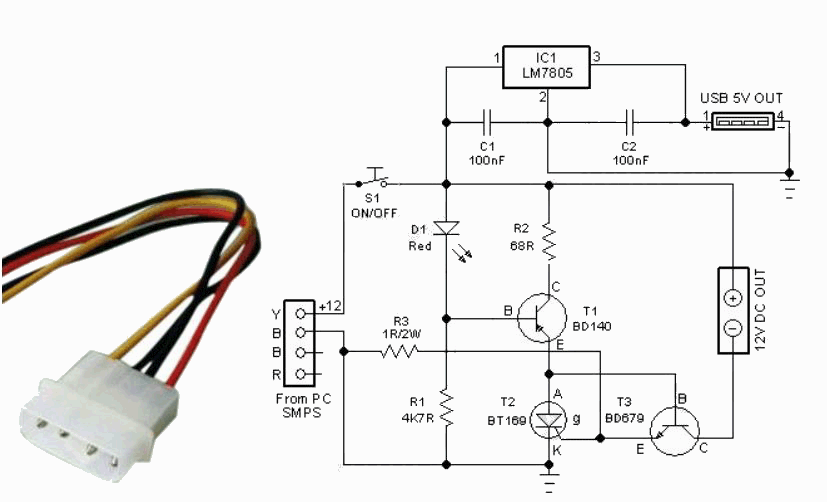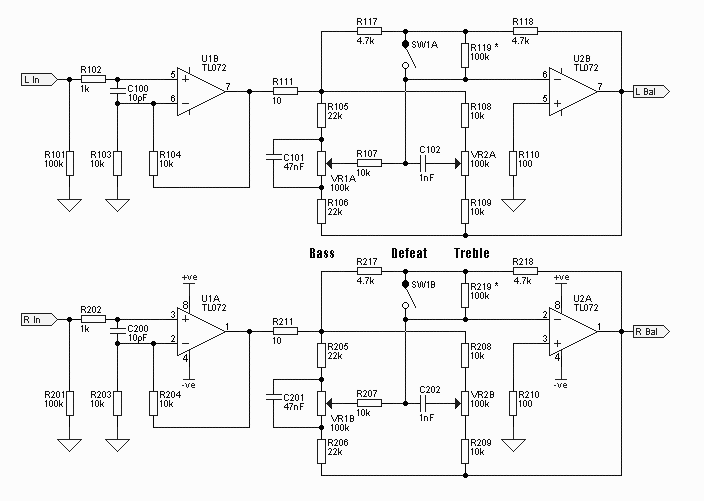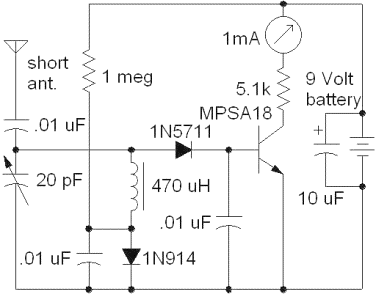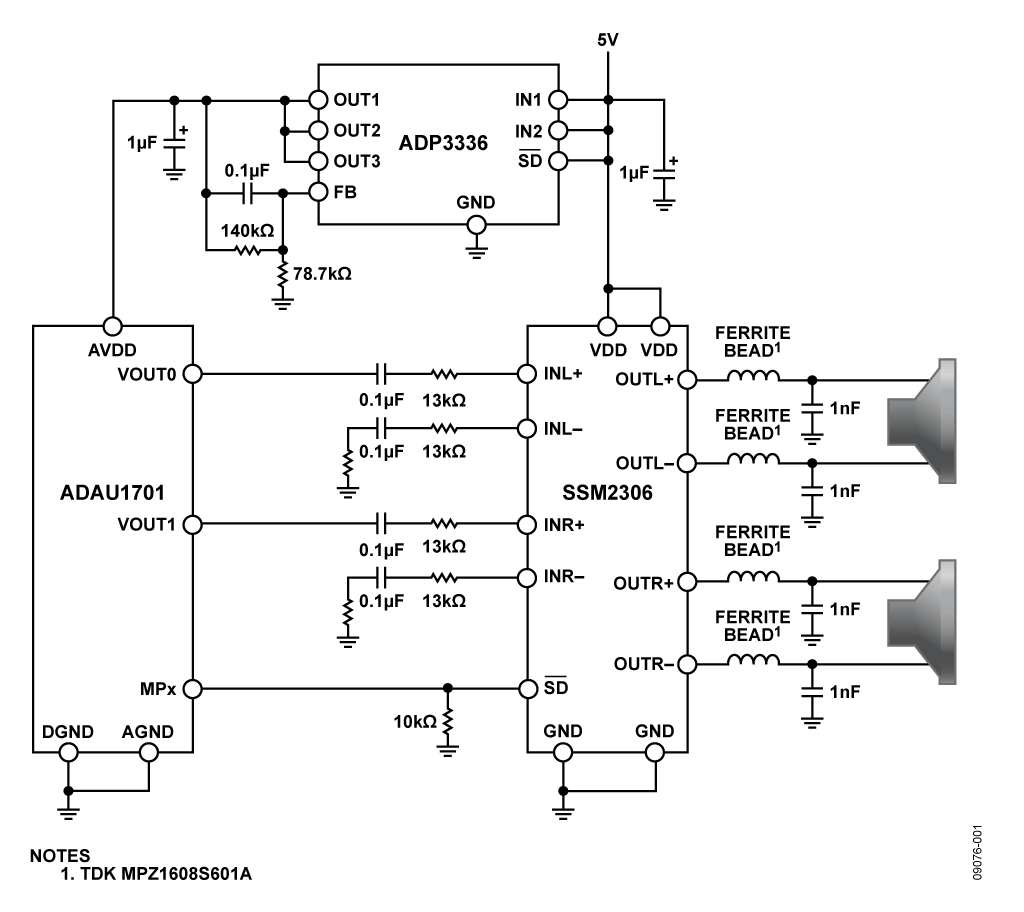
Dual Power Amplifier Using TDA7293 MOSFET IC
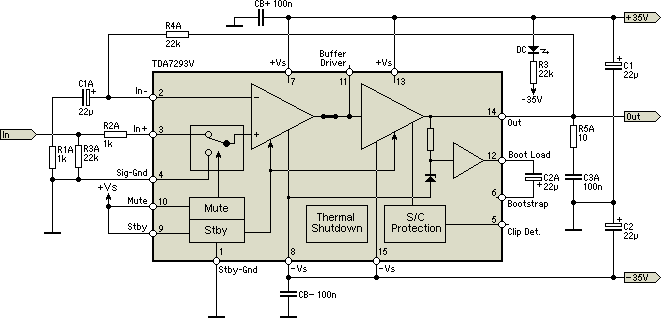
As readers may know, there are several power amplifier projects, including two that utilize integrated circuit (IC) power amplifiers, commonly referred to as power op-amps. Both of these projects have gained popularity, and this new project is not intended to replace them. However, it is considerably smaller than the others, making it easier to build a multi-amplifier unit due to its reduced space requirements. It is quite straightforward to incorporate four amplifiers (two boards) into a compact area, but it is important to ensure adequate heatsinking when operating these amplifiers at significant power levels. The TDA7293 IC employs a MOSFET power stage, in contrast to the bipolar transistors used in the other designs. The primary advantage of the MOSFET stage is its reduced need for extensive protection circuitry, minimizing undesirable artifacts associated with protection circuits. There are no significant drawbacks to the TDA7293; however, one batch was noted to require a higher voltage on the Standby and Mute pins than specified for proper operation. This is not a limitation since both pins are connected to the positive supply rail, effectively disabling them. This project has been in planning for an extended period, and the board and project description are now complete. The board dimensions are compact at only 77 x 31 mm, facilitating installation in tight spaces, provided that adequate heatsinking is available. The TDA7293 offers a multitude of options, including the ability to add a second power stage (using another IC) in parallel with the main stage, which enhances power delivery into low impedance loads; however, this approach can be costly for a modest power increase. The design incorporates muting and standby functions, although these features have not been utilized in this project. The schematic, based on the PCB version, is illustrated in Figure 1. All non-essential functions have been disabled, allowing the board to operate as a standard power amplifier. While the design accommodates two TDA7293 ICs, it can be effectively used with just one, and the small PCB size does not pose any inconvenience. A high-brightness LED is included to indicate power availability, and due to low current requirements, this LED is typically of a high brightness type. The IC representation has been modified for clarity while maintaining the format consistent with the data sheet. Since the board contains two amplifiers, most components are duplicated, except for the power supply bypass capacitors and the LED "Power Good" indicator. These ICs are highly reliable, similar to most power amplifier ICs, and to minimize PCB size, fuse clips and fuses have not been included; instead, the design features fusible tracks that will fail in the event of a catastrophic fault. While this solution does not provide the reliability of a traditional fuse, it serves to protect the power transformer rather than the amplifiers or PCB. A gain of 23 (27 dB) is typically used for all amplifiers, and the TDA7293 is specified for a minimum gain of 26 dB to prevent oscillation. Although this margin is small, testing has shown that the amplifier remains stable. An increase in gain to 28 (29 dB) is possible by changing the input and feedback resistors (R3A/B and R4A/B) from 22k to 27k. The circuit is conventional and straightforward due to the lack of additional internal functions. The LED is optional, and it may be omitted along with series resistor R3 if not needed. Connections can be made using plugs and sockets or through hard wiring, with hard wiring likely being the preferred method due to the complexity and added cost of connectors, which may compromise reliability. The specifications for the TDA7293 suggest that it can handle supply voltages of up to ±50V; however, this is contingent on specific conditions.
The circuit design focuses on a compact and efficient layout, allowing for the integration of two TDA7293 amplifiers on a single PCB. The choice of MOSFET technology in the TDA7293 allows for better thermal management and lower distortion levels, which are critical for high-fidelity audio applications. The schematic includes all necessary connections for power supply, input, and output, ensuring that the amplifier operates within optimal parameters.
In terms of component selection, the use of high-quality capacitors and resistors is recommended to maintain signal integrity and performance. The layout should prioritize short signal paths and adequate grounding to minimize noise and interference. The inclusion of fusible tracks instead of traditional fuses is a design choice that emphasizes space-saving while still providing a level of fault protection.
The board's compact dimensions make it suitable for various applications, including home audio systems, portable speakers, and other audio equipment where space is at a premium. The ability to operate with a single TDA7293 or dual configurations provides flexibility for users depending on their power requirements. Overall, this project represents a practical solution for those seeking a reliable and space-efficient power amplifier design.As readers will know, there are already several power amplifier projects, two using IC power amps (aka power opamps). Both have been popular, and this project is not designed to replace either of them. However, it is significantly smaller than the others, so it makes building a multiple amp unit somewhat easier because the space demand is much low
er. It`s quite simple to include 4 amps (two boards) into a small space, but be aware that good heatsinking is essential if you expect to run these amps at significant power levels. The TDA7293 IC uses a MOSFET power stage, where the others featured use bipolar transistors. The main benefit of the MOSFET stage is that it doesn`t need such radical protection circuitry as a bipolar stage, so unpleasant protection circuit artefacts are eliminated.
There are no apparent downsides to the TDA7293, although it was found that one batch required a much higher voltage on the Standby and Mute pins than specified, or the amps would not work. This is not a limitation, since both are tied to the positive supply rail and are therefore disabled.
This particular project has been planned for a long time, but for some reason I never got around to completing the board or the project description. This is now rectified, and it`s ready to "rock and roll". The board is very small - only 77 x 31mm, so getting it into tight spaces is easy. provided adequate heatsinking is available of course. The TDA7293 has a bewildering number of options, even allowing you to add a second power stage (in another IC) in parallel with the main one.
This improves power into low impedance loads, but is a rather expensive way to get a relatively small power increase. It also features muting and standby functions, although I`ve elected not to use these. The schematic is shown in Figure 1, and is based on the PCB version. All unnecessary functions have been disabled, so it functions as a perfectly normal power amplifier. While the board is designed to take two TDA7293 ICs, it can naturally be operated with only one, and the PCB is small enough so that this is not an inconvenience.
A LED is included to indicate that power is available, and because of the low current this will typically be a high brightness type. The IC has been shown in the same format that`s shown in the data sheet, but has been cleaned up for publication here.
Since there are two amps on the board, there are two of most of the things shown, other than the power supply bypass caps and LED "Power Good" indicator. These ICs are extremely reliable (as are most power amp ICs), and to reduce the PCB size as much as possible, fuse clips and fuses have not been included.
Instead, there are fusible tracks on the board that will fail if there is a catastrophic fault. While this is not an extremely reliable fuse, the purpose is to prevent power transformer failure, not to protect the amplifiers or PCB. I normally use a gain of 23 (27dB) for all amplifiers, and the TDA7293 is specified for a minimum gain of 26dB, below which it may oscillate.
Although this is only a small margin, tests so far indicate that the amp is completely stable. If you wish, you may increase the gain to 28 (29dB) to give a bit more safety margin. To do this, just change the input and feedback resistors (R3A/B and R4A/B) from 22k to 27k. The circuit is conventional, and is very simple because all additional internal functions are unused. The LED is optional, and if you don`t think you`ll need it, it may be omitted, along with series resistor R3.
All connections can be made with plugs and sockets, or hard wired. In most cases, I expect that hard wiring will be the most common, as the connectors are a pain to wire, and add unnecessary cost as well as reduce reliability. The TDA7293 specifications might lead you to believe that it can use supply voltages of up to ±50V. With zero input signal (and therefore no output) it might, but I don`t reco 🔗 External reference
The circuit design focuses on a compact and efficient layout, allowing for the integration of two TDA7293 amplifiers on a single PCB. The choice of MOSFET technology in the TDA7293 allows for better thermal management and lower distortion levels, which are critical for high-fidelity audio applications. The schematic includes all necessary connections for power supply, input, and output, ensuring that the amplifier operates within optimal parameters.
In terms of component selection, the use of high-quality capacitors and resistors is recommended to maintain signal integrity and performance. The layout should prioritize short signal paths and adequate grounding to minimize noise and interference. The inclusion of fusible tracks instead of traditional fuses is a design choice that emphasizes space-saving while still providing a level of fault protection.
The board's compact dimensions make it suitable for various applications, including home audio systems, portable speakers, and other audio equipment where space is at a premium. The ability to operate with a single TDA7293 or dual configurations provides flexibility for users depending on their power requirements. Overall, this project represents a practical solution for those seeking a reliable and space-efficient power amplifier design.As readers will know, there are already several power amplifier projects, two using IC power amps (aka power opamps). Both have been popular, and this project is not designed to replace either of them. However, it is significantly smaller than the others, so it makes building a multiple amp unit somewhat easier because the space demand is much low
er. It`s quite simple to include 4 amps (two boards) into a small space, but be aware that good heatsinking is essential if you expect to run these amps at significant power levels. The TDA7293 IC uses a MOSFET power stage, where the others featured use bipolar transistors. The main benefit of the MOSFET stage is that it doesn`t need such radical protection circuitry as a bipolar stage, so unpleasant protection circuit artefacts are eliminated.
There are no apparent downsides to the TDA7293, although it was found that one batch required a much higher voltage on the Standby and Mute pins than specified, or the amps would not work. This is not a limitation, since both are tied to the positive supply rail and are therefore disabled.
This particular project has been planned for a long time, but for some reason I never got around to completing the board or the project description. This is now rectified, and it`s ready to "rock and roll". The board is very small - only 77 x 31mm, so getting it into tight spaces is easy. provided adequate heatsinking is available of course. The TDA7293 has a bewildering number of options, even allowing you to add a second power stage (in another IC) in parallel with the main one.
This improves power into low impedance loads, but is a rather expensive way to get a relatively small power increase. It also features muting and standby functions, although I`ve elected not to use these. The schematic is shown in Figure 1, and is based on the PCB version. All unnecessary functions have been disabled, so it functions as a perfectly normal power amplifier. While the board is designed to take two TDA7293 ICs, it can naturally be operated with only one, and the PCB is small enough so that this is not an inconvenience.
A LED is included to indicate that power is available, and because of the low current this will typically be a high brightness type. The IC has been shown in the same format that`s shown in the data sheet, but has been cleaned up for publication here.
Since there are two amps on the board, there are two of most of the things shown, other than the power supply bypass caps and LED "Power Good" indicator. These ICs are extremely reliable (as are most power amp ICs), and to reduce the PCB size as much as possible, fuse clips and fuses have not been included.
Instead, there are fusible tracks on the board that will fail if there is a catastrophic fault. While this is not an extremely reliable fuse, the purpose is to prevent power transformer failure, not to protect the amplifiers or PCB. I normally use a gain of 23 (27dB) for all amplifiers, and the TDA7293 is specified for a minimum gain of 26dB, below which it may oscillate.
Although this is only a small margin, tests so far indicate that the amp is completely stable. If you wish, you may increase the gain to 28 (29dB) to give a bit more safety margin. To do this, just change the input and feedback resistors (R3A/B and R4A/B) from 22k to 27k. The circuit is conventional, and is very simple because all additional internal functions are unused. The LED is optional, and if you don`t think you`ll need it, it may be omitted, along with series resistor R3.
All connections can be made with plugs and sockets, or hard wired. In most cases, I expect that hard wiring will be the most common, as the connectors are a pain to wire, and add unnecessary cost as well as reduce reliability. The TDA7293 specifications might lead you to believe that it can use supply voltages of up to ±50V. With zero input signal (and therefore no output) it might, but I don`t reco 🔗 External reference
